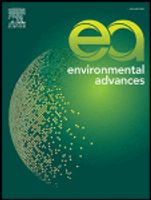Encyclopedia
Dioxin | Encyclopedia.com
Dioxin Dioxin, formed by burning chlorine-based chemical compounds with hydrocarbons, is one of the most toxic chemicals known. Dioxin is a general term that describes a group of hundreds of chemicals that are highly persistent in the environment.
NCBI
A Review of Soil Contaminated with Dioxins and Biodegradation ...
Dioxins are environmentally stable ... [2,3]. In addition, dioxins are also substances which are man-made through activities such as the production of 2,4,5-T herbicides, chlorine-containing plant protection agents, combustion processes (the burning municipal waste, medical ...
Wikipedia
Chlorine dioxide - Wikipedia
December 9, 2024 - Chlorine dioxide is a chemical compound with the formula ClO2 that exists as yellowish-green gas above 11 °C, a reddish-brown liquid between 11 °C and −59 °C, and as bright orange crystals below −59 °C. It is usually handled as an aqueous solution. It is commonly used as a bleach.
US EPA
Human Health - water ingestion only Fact Sheet for Chlorinated ...
June 20, 2024 - Human Health - water ingestion only Fact Sheet for Chlorinated dioxins and furans: (Human Health Carcinogen - water ingestion only), New York State Department of Environmental Conservation (pdf) (41.62 KB) Fact Sheet for Chlorinated dioxins and furans
Medcraveonline
Dioxins: source, origin and toxicity assessment - MedCrave online
Dioxin is formed as an unintentional by-product of many industrial processes involving chlorine such as waste incineration, chemical and pesticide manufacturing and pulp and paper bleaching. Dioxin is formed by burning chlorine-based chemical compounds with hydrocarbons.
Undrr
Dioxins and Dioxin-like Substances | UNDRR
June 7, 2023 - Dioxins and dioxin-like substances, including polychlorinated biphenyls (PCBs), polychlorinated dibenzo-p-dioxins (PCDDs) and polychlorinated dibenzofurans (PCDFs) are persistent organic pollutants (POPs) and are unwanted by-products of combustion and various industrial processes, such as chlorine ...
ScienceDirect

Dioxins and plastic waste: A scientometric analysis and systematic ...
Dioxins are highly toxic compounds that pose significant risks to human health and the environment. Burning plastics is a major source of dioxin emiss…
WHO
Chemicals of public concerns I Dioxins
These substances are unwanted ... such as chlorine bleaching of paper pulp and smelting. While manufacture of PCBs is now prohibited and their use in equipment is to be phased out by 2025, release into the environment still occurs from disposal of large-scale electrical equipment and waste. General population exposure to dioxins and dioxin-like ...
Verywell Health
Dioxins: What They Are and How to Avoid Them
They are released into the air ... trash burning. They can also form from natural sources like forest fires and volcanos. The EPA has listed dioxins as one of the 30 hazardous air pollutants that pose the greatest health threat to urban areas. While there are hundreds of different forms, only the 2,3,7,8-substituted tetra- through octa-chlorinated dioxins and ...
Intechopen
Dioxins and Furans: Emerging Contaminants of Air | IntechOpen
PCDD/PCDFs followed a mechanism which uses macromolecule carbon and chlorine in fly ash to form dioxins at low temperature. There are various sources of the formation of PCDD/PCDFs like hospital waste incinerators, industrial combustion and burning of domestic waste.
NCBI
Environmental Health Risk Assessment of Dioxin Exposure through ...
This study used the Australian Environmental Health Risk Assessment Framework to assess the human health risk of dioxin exposure through foods for local residents in two wards of Bien Hoa City, Vietnam. These wards are known hot-spots for dioxin and ...
CDC
CDC | Facts About Chlorine
Information on terrorism and public health. Provided by the Centers for Disease Control and Prevention (CDC).
US EPA
Dioxin | US EPA
March 5, 2013 - This site contains all of EPA's information on the chemical known as 2,3,7,8-tetrachlorodibenzo-p-dioxin, which is more commonly referred to as "dioxin."
Ewg
Dioxin | Environmental Working Group
Chlorinated dioxins form as an unintended byproduct of waste incineration and a variety of industrial processes, including smelting, chlorine paper bleaching and pesticide manufacturing. Burning household waste and even forest fires can also produce dioxins.
Canada
Dioxins and Furans - Canada.ca
All dioxins have the same basic ... all have chlorine atoms as part of their make-up. Furans are similar, but have a different "skeleton". These substances vary widely in toxicity. The one considered most toxic is referred to as 2,3,7,8-tetrachlorodibenzo-p-dioxin, or simply TCDD. The biggest source of dioxins and furans in Canada is the large-scale burning of municipal ...
Plasticoceans
Burning Plastic Exacerbates Air Pollution - PlasticOceans.org
March 12, 2021 - Burning plastic has been found to contribute to air pollution in Delhi, India, and elsewhere, causing health risks and lower crop yields.
Previous
Page 6